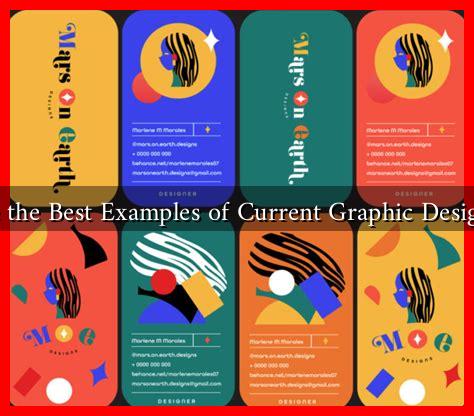-
Table of Contents
What Are the Best Examples of Current Graphic Design Trends?
Graphic design is an ever-evolving field that reflects cultural shifts, technological advancements, and consumer preferences. As we move through 2023, several trends have emerged that are shaping the landscape of graphic design. This article explores some of the most compelling graphic design trends currently making waves, providing insights and examples that illustrate their impact.
1. Minimalism with a Twist
Minimalism has been a dominant trend in graphic design for years, but in 2023, it has taken on a new form. Designers are now incorporating unexpected elements into minimalist designs, creating a fresh and engaging aesthetic.
- Bold Typography: Large, eye-catching fonts are being used to draw attention and convey messages succinctly.
- Vibrant Colors: While minimalism often leans towards muted palettes, designers are now integrating bold colors to create contrast and visual interest.
- Asymmetrical Layouts: Breaking away from traditional grid systems, asymmetrical designs add a dynamic feel to minimalist aesthetics.
For example, the website of Apple showcases a minimalist design that uses bold typography and vibrant images to create a striking visual experience.
2. 3D and Immersive Design
With advancements in technology, 3D design has become more accessible and prevalent. Designers are leveraging 3D elements to create immersive experiences that captivate audiences.
- Augmented Reality (AR): Brands are using AR to enhance user interaction, allowing customers to visualize products in their own space.
- 3D Typography: Text that appears to pop off the screen adds depth and intrigue to designs.
- Realistic Textures: Incorporating textures that mimic real-world materials can make digital designs feel more tangible.
A notable example is the Nike website, which utilizes 3D elements to showcase its products in an engaging manner, enhancing the shopping experience.
3. Retro and Nostalgic Aesthetics
In a world dominated by rapid technological change, many designers are turning to nostalgia as a source of inspiration. Retro design elements evoke feelings of comfort and familiarity.
- Vintage Color Palettes: Soft pastels and muted tones reminiscent of the 70s and 80s are making a comeback.
- Old-School Typography: Fonts that mimic typewriter or hand-drawn styles are being used to create a sense of authenticity.
- Graphic Patterns: Geometric shapes and patterns from past decades are being reimagined in modern contexts.
Brands like Coca-Cola have successfully integrated retro elements into their marketing campaigns, appealing to consumers’ sense of nostalgia.
4. Sustainability in Design
As environmental concerns grow, many designers are prioritizing sustainability in their work. This trend reflects a broader societal shift towards eco-consciousness.
- Eco-Friendly Materials: Designers are opting for sustainable materials in packaging and print design.
- Green Color Schemes: Earthy tones and natural colors are being used to convey a commitment to sustainability.
- Socially Responsible Messaging: Brands are using their platforms to promote environmental awareness and social responsibility.
For instance, Patagonia has built its brand around sustainability, using graphic design to communicate its environmental mission effectively.
5. Data Visualization and Infographics
In an age where information overload is common, effective data visualization has become crucial. Infographics and visual data representations help simplify complex information.
- Interactive Infographics: Users can engage with data through interactive elements, making the information more digestible.
- Bold Visual Hierarchy: Clear distinctions in font size and color help guide the viewer’s eye through the data.
- Storytelling with Data: Designers are crafting narratives around data to make it more relatable and impactful.
Companies like Statista excel in using infographics to present data in a visually appealing and easily understandable manner.
Conclusion
The graphic design landscape in 2023 is vibrant and diverse, reflecting a blend of innovation and nostalgia. From minimalist designs with bold elements to immersive 3D experiences and sustainable practices, these trends highlight the adaptability of graphic design in meeting contemporary needs. As designers continue to push boundaries and explore new technologies, we can expect these trends to evolve further, shaping the future of visual communication.
By staying informed about these trends, businesses and designers can create compelling visuals that resonate with audiences and stand out in a crowded marketplace.

